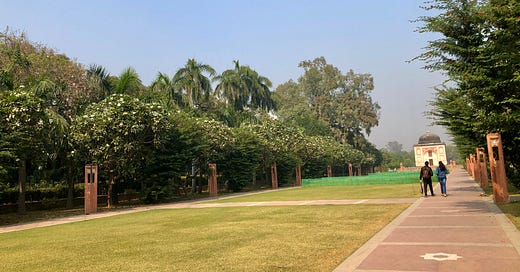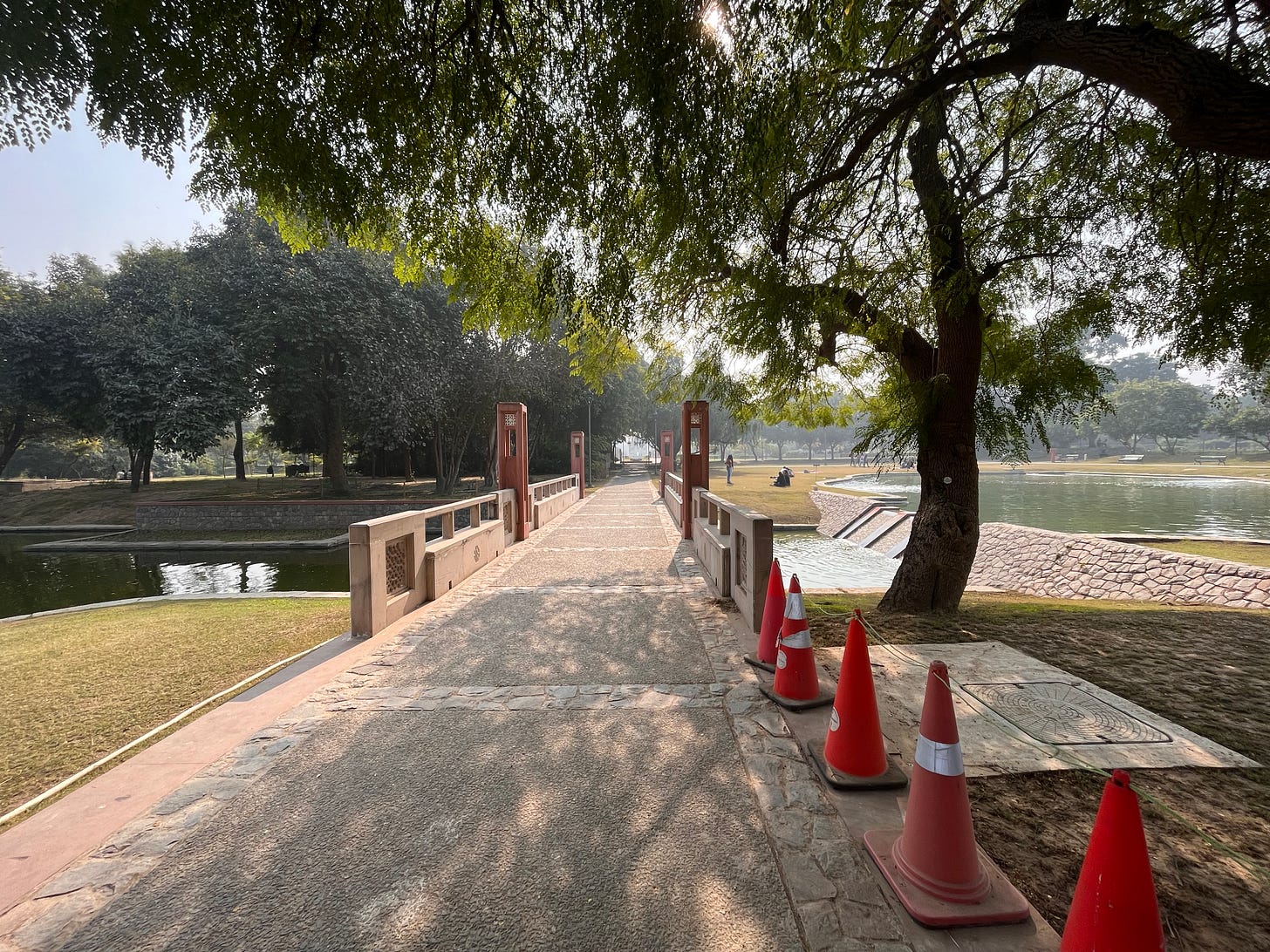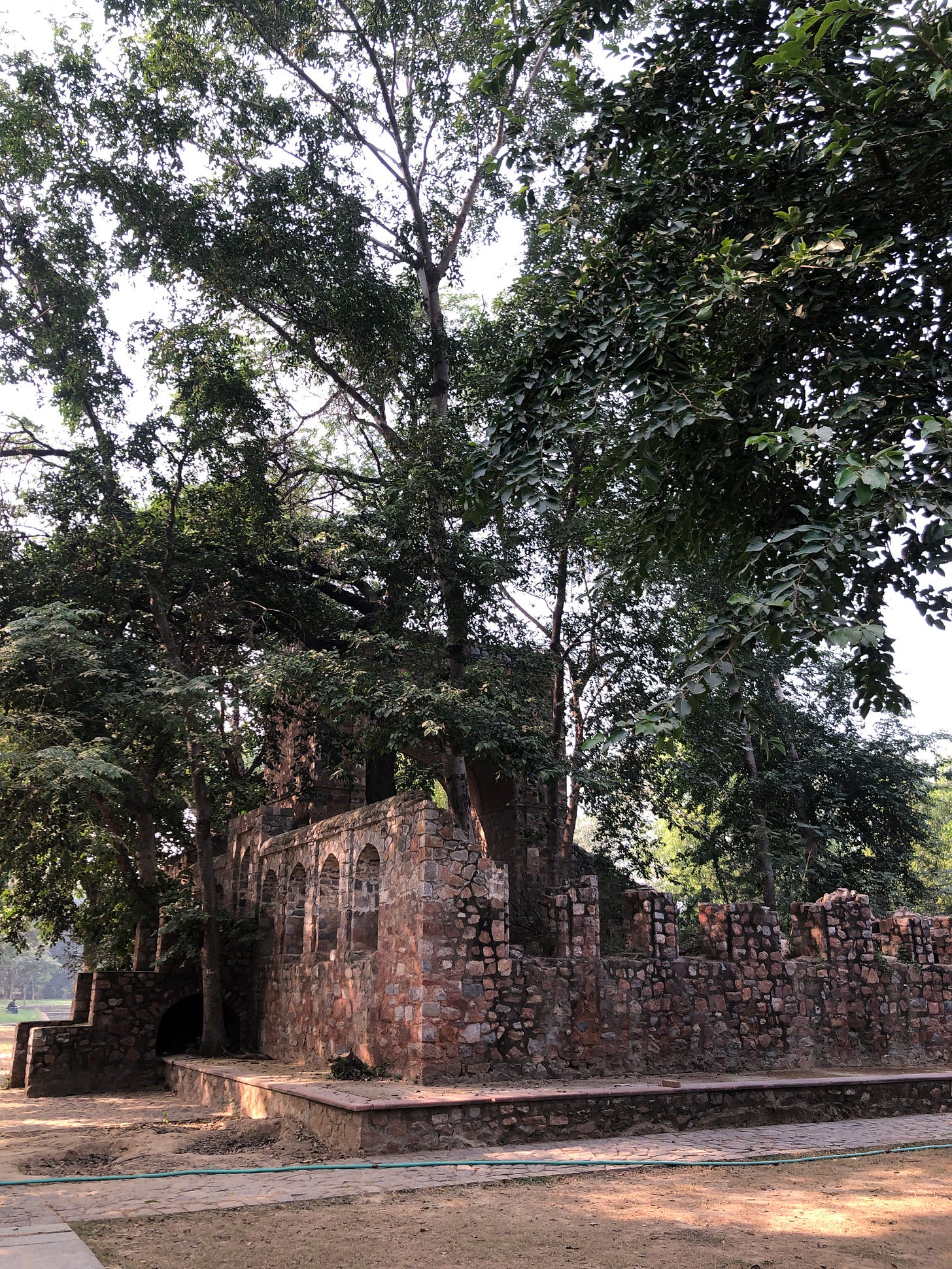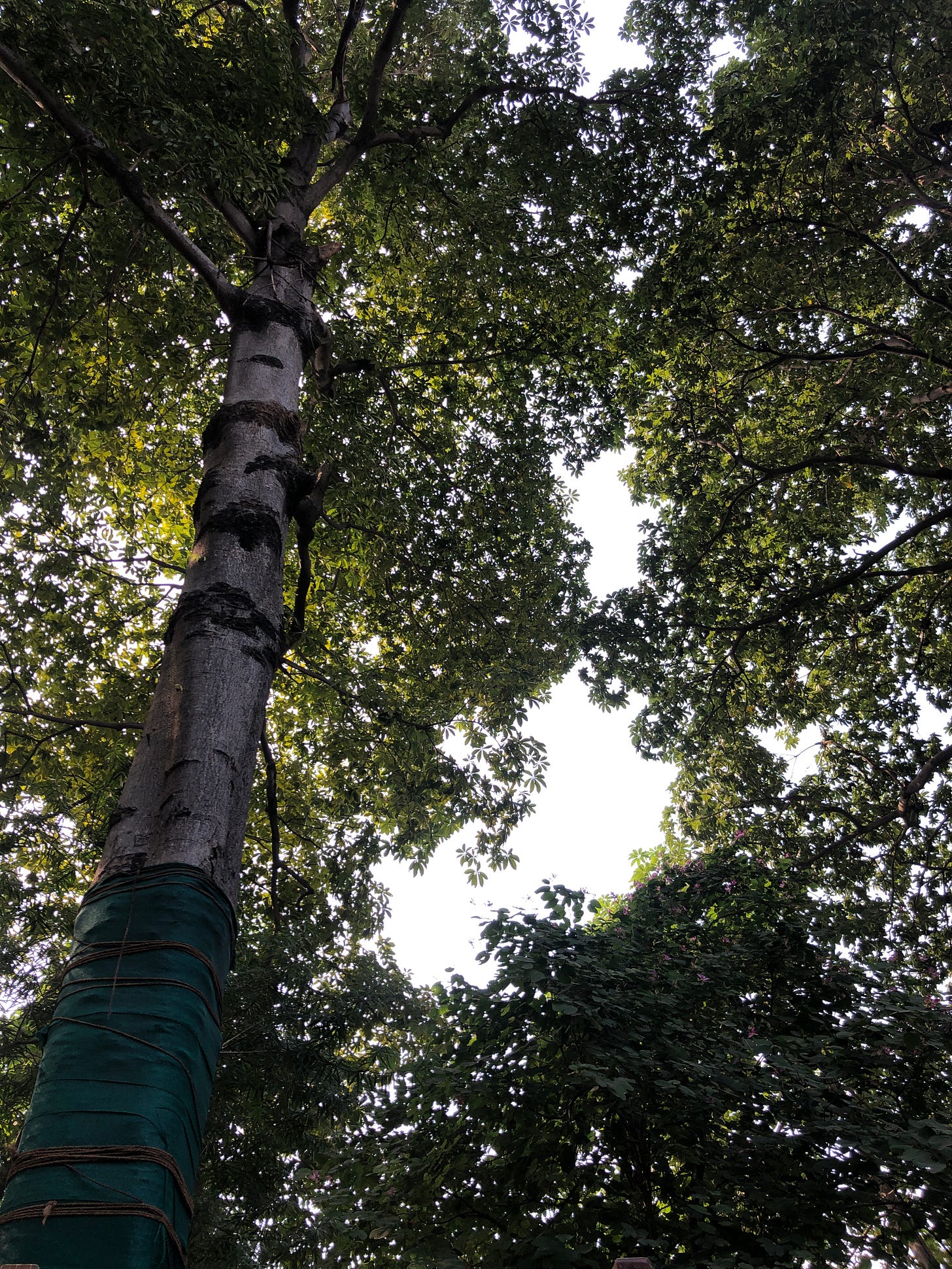Many years ago, during a visit to Mumbai, my father asked if I wanted to take a walk in a park. I said yes. We walked a few meters from the building we were in, and there was a rectangular strip of green. There were a lot of people walking determinedly clad with purposeful shoes; older people taking slower steps; and an occasional baby pram. It was less of a park, more a pathway that could be distinguished from roads and cemented walkways by the grass underfoot. I stood in a corner and took a slow circle, and all around me were tall buildings looming over this rectangular grassy strip. We walked too, taking our place in a queue that went round and round the rectangle in measured steps.
I thought about that rectangular strip when I visited Sunder Nursery in Delhi recently. It is a strange name for someone who is unfamiliar with it, like I was. When I. said I must visit it, I had formed ideas of a nursery, a smallish place with potted plants and what nots. Only one part of it was true: the information boards told us that it was started as a nursery by the British and I think it is spread over 90 acres, if I remember what the board said. What you have spread over those 90 acres are green and trees and ancient buildings and small lakes. You have young people spreading small chaddars and enjoying a picnic. You have school children running about. You have people in twos and threes walking together, unmindful of where they are going. It is as if everyone enters into a space of aimlessness; I didn’t see purposeful gaits and determined steps.
Even we slowed down, pausing to talk about the domes of old buildings and how they originally would have had tiles, which you can now only infer from the faded colour patterns. We stared at a tree that had a canopy that seemed to be shaped like large petals of a giant flower unfurling. We shared stories of many years ago, some funny, some less so; but even grief seemed to arrange itself like a tree’s shade; dark but somehow comforting.
The walkway near the entrance of the Sundar Nursery
Sunder Nursery was renovated by the Aga Khan Trust and I was struck by what His Highness the Aga Khan had to say: “Creating green spaces in urban areas constitutes a significant improvement in the quality of the environment and people’s living conditions. They are leisure spaces and meeting places for all ages and all social categories, encouraging different sectors of the population to mix and integrate. And they have proved to be catalysts for economic activity and a source of employment, both directly and indirectly, particularly through the services provided for visitors.” I was struck by the emphasis on utility of a public space in economic terms; it is as if leisure is tucked away between all the other verbiage, for that’s the question everyone asks — how can we monetise? What’s the business model behind public spaces?
In Chennai, many years ago, there was an effort by the then government, which was a festival of public spaces called Chennai Sangamam. In beaches, public parks, and other places, you had artists from all over Tamil Nadu giving performances. City hotels had stalls with treats and delicacies from the region; I had my first jigarthada there. I saw a man hoisting a child on his shoulders grooving in front of me, as we watched a performance, and I thought of the memory that child would make — standing in a beachfront with crowds milling about unthreatening, festive, listening to songs, and the warmth of his father’s fingers around his ankles.
A heritage structure in Sundar Nursery
Once, in a furniture shop in the bylanes of Jogeshwari in Mumbai, I saw an old cupboard. When you opened the door, there was an inscription of a Parsi business that once owned the cupboard. For a while, I stood there trying to think of the cupboard’s story; where was it, whose hands held the handles; what business secrets did it hold (now, if you have to imagine things, might as well be a bit romantic). There were other cupboards around, but somehow, this one appealed a lot more; and I left the shop wondering about why people pay so much for antiques — is it that somehow they seek to own a story? Or is it that what you cannot fast-fast is something that’s old; history takes time to make.
As we walked around Sundar Nursery, we stumbled upon old structures, old trees. Of course, if we had finished reading the information board, we would have known what those structures were, but in that moment, I did not want to read anything; I just wanted to gaze at those ancient bones and stare.







“ We shared stories of many years ago, some funny, some less so; but even grief seemed to arrange itself like a tree’s shade; dark but somehow comforting.” soooo beautiful!!